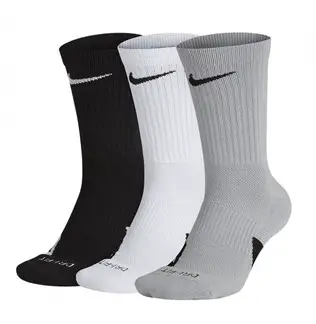Businesses charge different prices for different products, for different quantities of products, and for different combinations of products based on how they are bundled together.
The goal behind such price discrimination is to maximize revenue, maximize profit and minimize the risk of losing the customer to a competitor.
Block pricing is such a form of price discrimination which exploits the fact that different customers have different price elasticities. In other words, they are willing to pay different prices for different volumes and combinations of products.
What is Block Pricing?
Block Pricing is a pricing strategy where different products are combined into a single package and sold as one unit at the block price.
With Block Pricing, customers cannot purchase the individual products included in the block separately from each other. They are forced to purchase the entire block or nothing at all.
The objective behind block pricing is to maximize revenue per sale and extract what is referred to as the “consumer surplus”.
Consumer Surplus is a term from economics, and it refers to the difference between the price a customer pays for a product and the maximum price the customer would have been willing to pay.
You could view the “Consumer Surplus” as money left on the table and Block Pricing as a way to tap into it.

Advantages of Block Pricing
Maximize Revenue per sale
Imagine what would happen if a customer walks into a store with the intention of buying just one product and discovers that the only way to buy that product is to buy a bundle that includes that product and two other products.
Either the customer will agree to buy the bundle or will walk away. This is what makes Block Pricing a gamble.
But if the customer is willing to pay for the bundle, and the price of the bundle is more than the price of each individual product in it, the store is bound to increase its revenue.
Grow Profits
More revenue will usually translate into higher profit.
This is especially true if the bundling of products is done smartly so that low-margin products are bundled together with high-margin products.
So, if you have customers who habitually purchase only low-margin products, consider creating packages that include high-margin products together with the low-margin products. This way the overall profit margin of the package or bundle will remain high.
Sell slow-moving products
Creating blocks or bundles is a great way to get slow-moving products out of the door. If you find yourself with excess inventory that isn’t selling so well, then try combining it into packages with products that are selling well.
The block price of the package can be slightly higher than the price of the product that is selling well. If your customers are willing to pay a little more to get an extra product that they otherwise would never have purchased, you could get rid of this excess inventory and replace it with something that sells better.
As you already know, holding too much inventory can be dangerous and expensive.
So, creating product blocks with block pricing is one of the easiest ways of getting excess inventory out of the door and into the hands of customers.
But, as you can imagine, block pricing is not the only way of dealing with excess inventory. There are other ways that could be more profitable and more effective, especially if the bundling of products isn’t an option. If you’d like to learn what these are, here’s an article in which we review 13 ways with which you can get rid of excess inventory.
Higher Customer Satisfaction (if done right)
When customers buy in a package made up of two or more products, they may get the impression that they got an excellent deal. This is especially true if:
- The customer gets the primary product – that is the product they wanted to buy in the first place.
- They are happy with the secondary product – that is the product the are forced to buy in order to get their primary product.
- They feel that the combined price of the package is a much better deal than buying each of the products independently.
When can you use Block Pricing?
Block Pricing doesn’t work all the time. In fact, if done incorrectly or with the wrong products, it can misfire and cause you to lose customers.
So before using the Block Pricing technique, you need to be sure that the conditions are right for it.
Block Pricing can work if:
1. Consumer Surplus exists
We saw earlier that Consumer Surplus refers to the difference in the price a customer pays for a product and the price they would have been willing to pay.
The idea behind Block Pricing is to tap this consumer surplus by selling the customer something more than what they were planning to purchase in the first place.
Now, if the product is already priced at or close to the maximum amount that a customer is willing to pay for it, there is no consumer surplus. And so, combining the product with another and charging more for the combined block will not result in a sale. Instead, you will likely lose the customer to a competitor who might offer the same product as a standalone.
2. The product has a powerful brand
A prerequisite of the Block Pricing strategy is that the brand being combined is strong enough to make the customer want to buy it despite the additional block price.
If the brand is weak or if the products being bundled are commodity products, the customer will not feel strongly enough about them to make the purchase at a higher price.
3. The products being combined are related to each other
Let’s say a customer walks into a store to buy some aftershave lotion. He sees that the only way to buy the aftershave brand he really wants is to buy a package that also includes a body spray.

(Source)
Well, he may not be looking for a body spray but it’s a related product and is useful. So, if he finds the price of the combined package to be acceptable (in short, a “consumer surplus” exists), then in order to have the aftershave of his choice, he will buy the package including the body spray.
So, combining an aftershave with a body spray would make sense.
On the other hand, combining an aftershave with a totally unrelated product, say ketchup, would make no sense. If a store were to create a package with a block price comprising of a bottle of Old Spice After Share and a bottle of Heinz ketchup (yikes!), it is highly unlikely to sell!
So, products being sold together at a block price must make sense together.
4. The Block Price remains lower than the customer’s willingness to pay
Just as it is necessary for a consumer surplus to exist before a block pricing strategy can be used, it is equally necessary that the block price does not exceed the customer’s willingness to pay.
In other words, the increase in price because of multiple products being bundled together must not exceed the consumer surplus. Otherwise, the customer will not make the purchase.
Examples of Block Pricing
Socks of different colors

(Image Source)
In many stores, the best deals on socks are on those that are sold in bulk.
There’s usually just one catch: The packages often include socks of different colors.
So, you may go shopping for 6 pairs of white socks but return with a package with 2 pairs of white socks, 2 pairs of grey socks and 2 pairs of black socks.
Bottled water

(Image Source)
While you can always buy just one bottle of water, often the best deals are had on buying packs of water – usually a pack of 6 bottles.
So, we may go to the store with the intention of buying just one bottle but return home with a pack of 6 bottles. That’s because we are willing to pay the block price for the entire package in return for a discounted price per bottle.
Summary
Block Pricing is a revenue-maximizing technique in which multiple products are bundled together and sold as a single unit with one price – the block price.
The concept relies on the fact that customers are often willing to pay more for a product than what they actually pay. This difference in price is called the Consumer Surplus.
Using the concept of the consumer surplus, businesses bundle products and charge customers more for the bundle than for the individual products in the bundle, but less than what the customer is willing to pay.
Block Pricing can help grow revenue, grow profits, sell slower-moving products and, if done correctly, increase customer satisfaction and retention.
